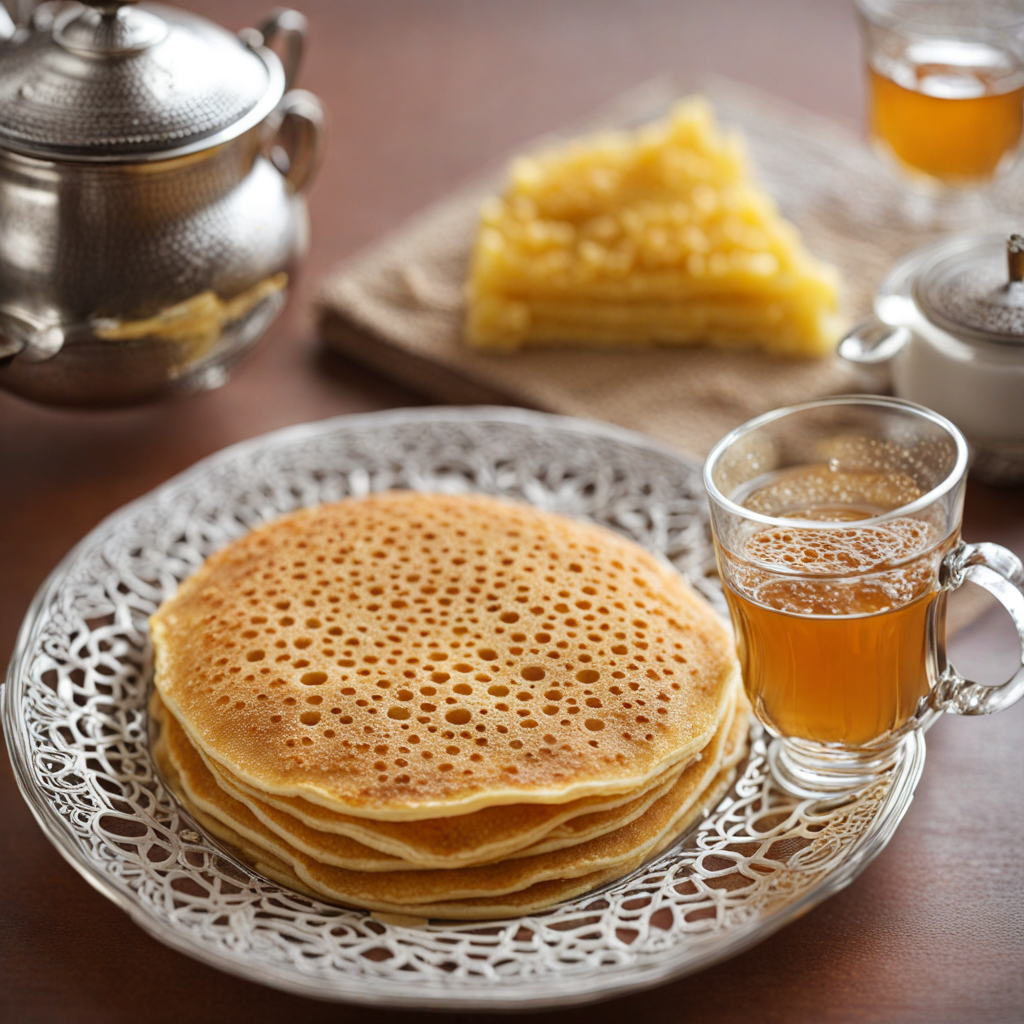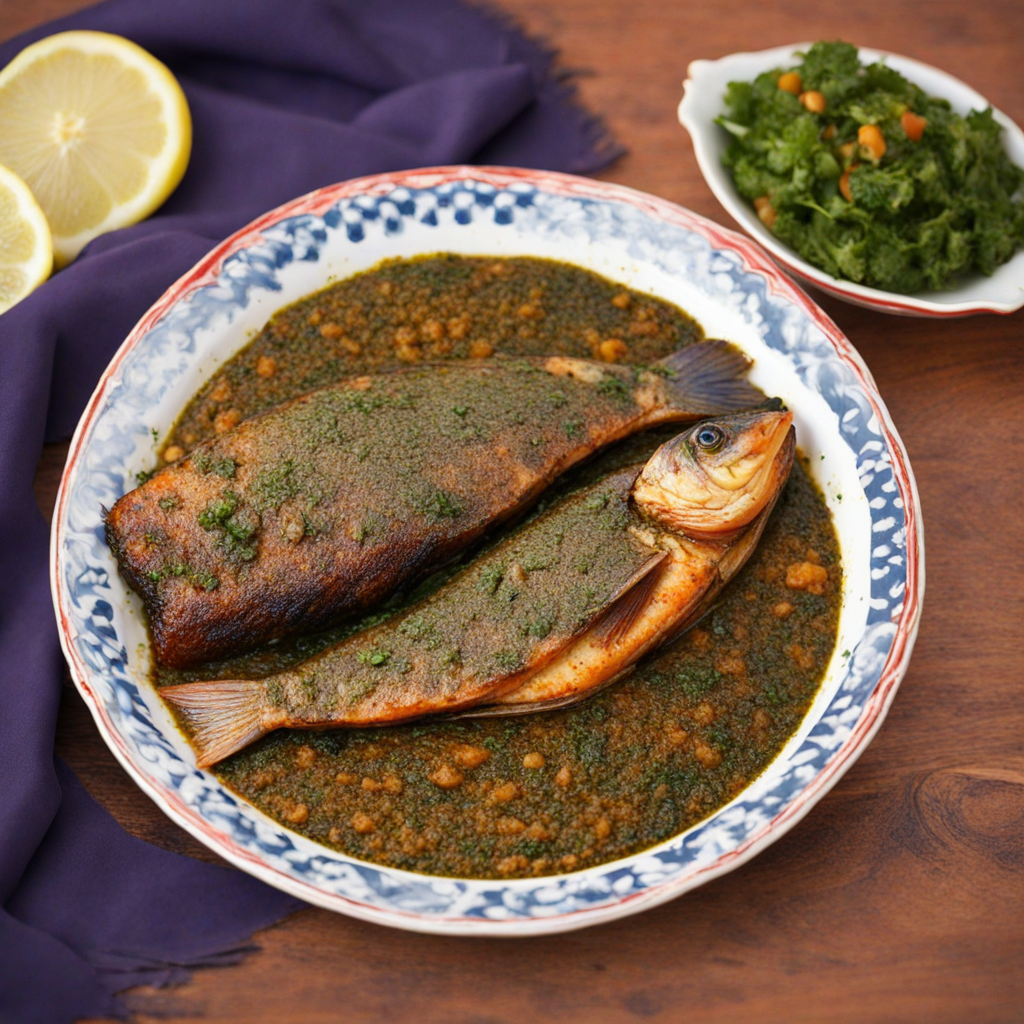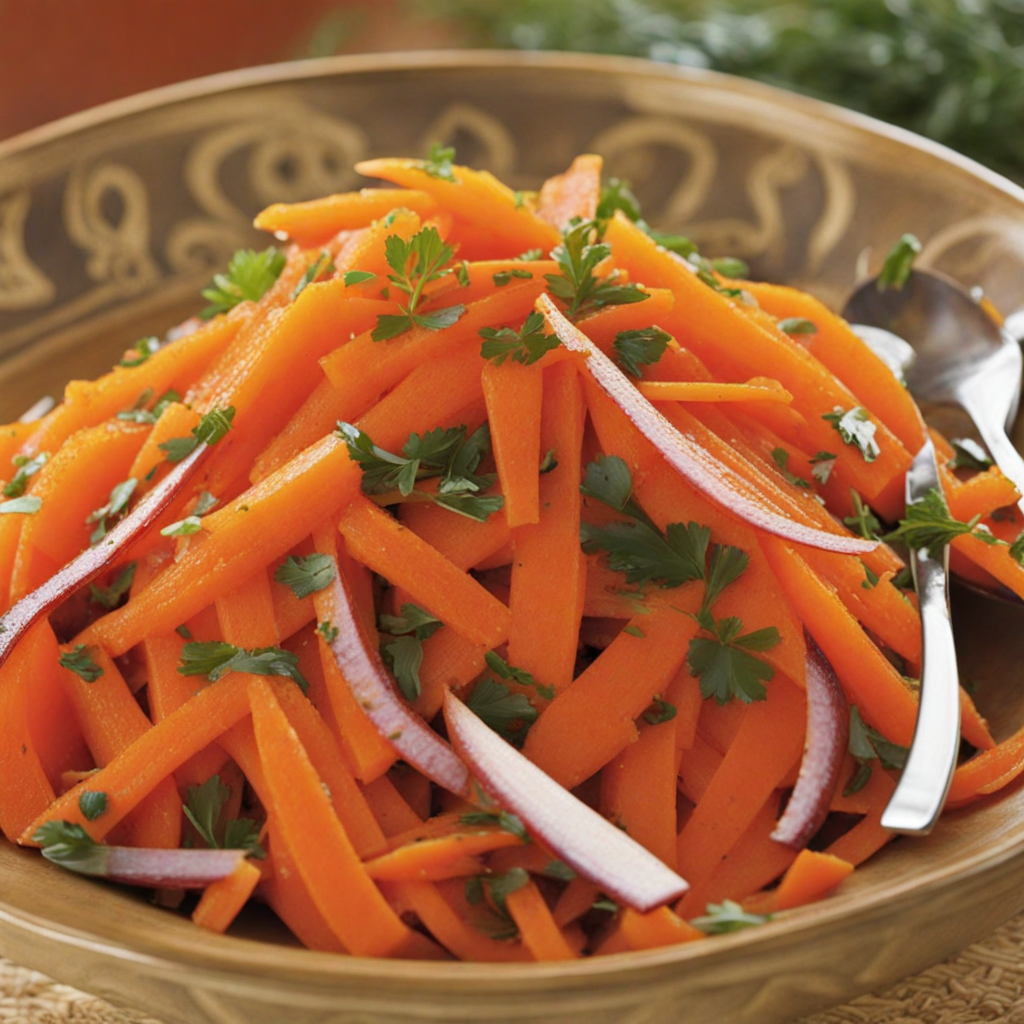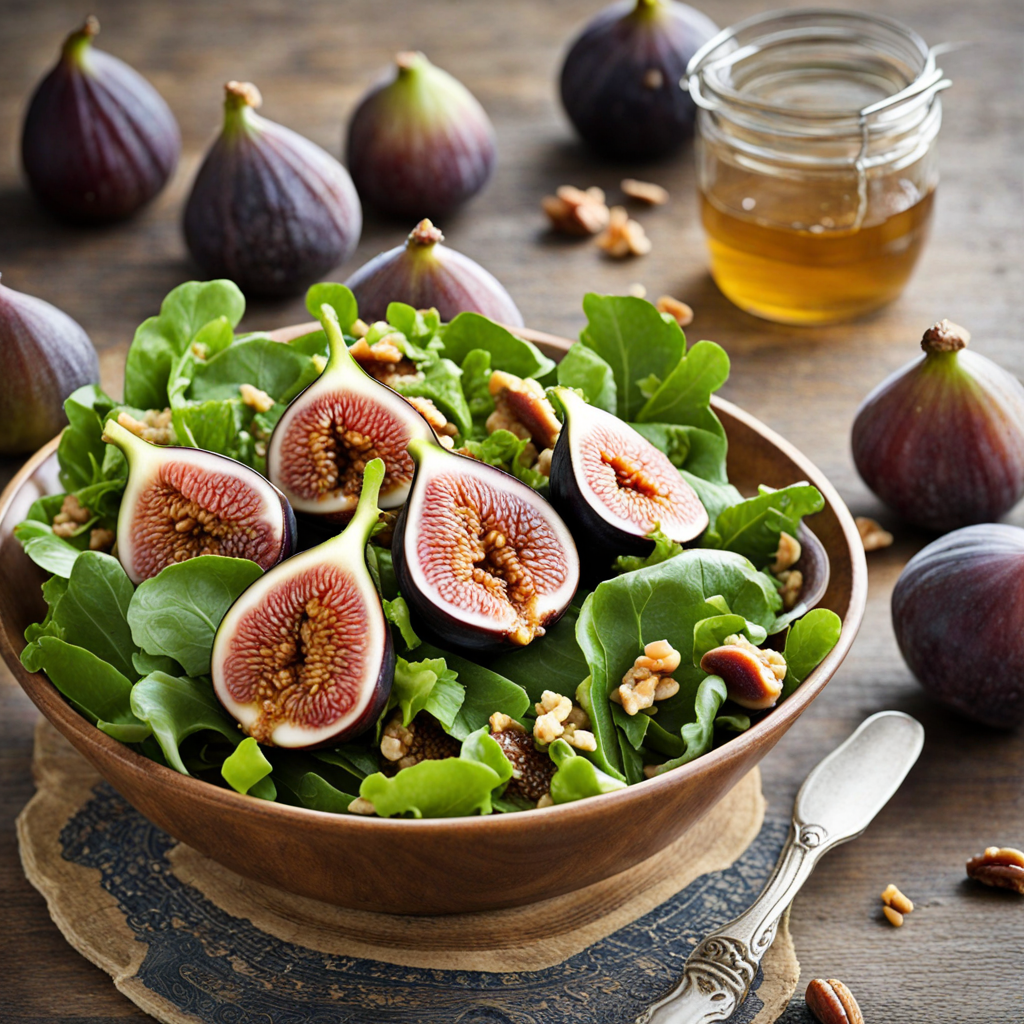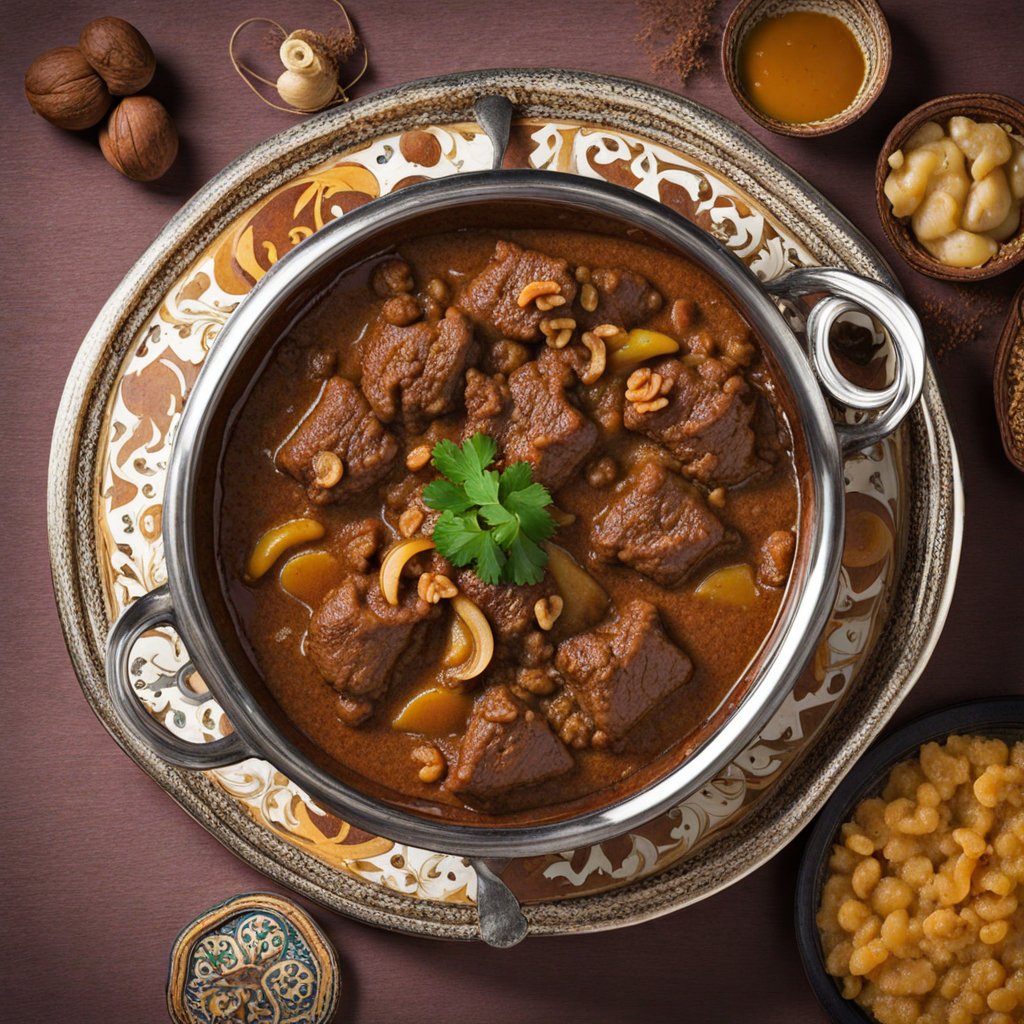Baghrir
Baghrir, often referred to as Moroccan pancakes or "thousand-hole pancakes," are a delightful culinary gem that hails from Morocco. These spongy, light pancakes are made from semolina and yeast, resulting in a unique texture that is both airy and slightly chewy. What sets Baghrir apart from other pancakes is the mesmerizing array of tiny holes that form on the surface during cooking. These holes are not just for show; they serve as perfect little pockets for soaking up the accompanying syrups or sauces, enhancing the overall flavor experience. Traditionally, Baghrir is served warm, often with a drizzle of honey or melted butter, which seeps into the pancake's holes, creating a sweet and indulgent treat. While they are commonly enjoyed at breakfast or as a snack, Baghrir can also be a delightful addition to any meal. The combination of the slightly nutty flavor from the semolina and the subtle tang from the yeast makes each bite a revelation, inviting you to savor the richness of Moroccan culinary traditions. In addition to the classic preparation, Baghrir can be customized with various toppings or fillings, such as nuts, fruit preserves, or flavored syrups, allowing for a delightful exploration of tastes. The pancakes can also serve as a foundation for savory dishes when paired with ingredients like spiced meats or vegetables, showcasing their versatility. Whether enjoyed plain or dressed up, Baghrir promises a unique and satisfying taste experience that is sure to leave a lasting impression on any food lover.
How It Became This Dish
The History of بغرير: Morocco's Delightful Pancake #### Origin and Etymology The culinary journey of بغرير (pronounced "baghrir") begins in Morocco, where this unique pancake has woven itself into the fabric of Berber culture. The term "بغرير" is derived from the Berber language, and it refers to the small holes that form on the surface of the pancake during cooking. This delicate texture is not merely for aesthetics; it is essential for absorbing the rich flavors of the accompanying toppings, typically honey and butter. The origins of بغرير are deeply rooted in the ancient practices of the Berber communities that have inhabited North Africa for thousands of years. The Berbers, known for their agricultural prowess, cultivated a variety of grains, including barley and wheat, which form the basis of many traditional Moroccan dishes. While the exact timeline of بغرير's inception is hard to pinpoint, it is likely that this pancake emerged alongside the introduction of griddle cooking techniques, a hallmark of Berber culinary traditions. #### Cultural Significance بغرير is more than just a food; it is a symbol of hospitality and community in Moroccan culture. Traditionally, it is served during special occasions, such as weddings and religious celebrations, but it is also a common breakfast item or snack enjoyed daily. The act of preparing بغرير is often communal, with family members gathering to mix the batter and cook the pancakes together, fostering a sense of unity and shared heritage. In Moroccan households, the preparation of بغرير typically involves a ritualistic aspect. The batter, made primarily from semolina, yeast, and water, is allowed to ferment, creating a light and airy texture. The cooking process is equally significant; the pancakes are poured onto a hot griddle, which requires skill to achieve the perfect balance of heat and timing. This meticulous attention to detail reflects the deep respect for culinary traditions that characterize Moroccan culture. The significance of بغرير extends beyond the dining table. It often features prominently in religious observances, especially during Ramadan, when it is served as a nourishing meal to break the fast. The pancake’s ability to soak up honey and butter also symbolizes the sweetness of life and the importance of sharing food as a form of love and gratitude. #### Development Over Time As with many traditional foods, بغرير has evolved over time, influenced by historical events, trade, and cultural exchanges. The Moroccan landscape, characterized by its diverse geography and rich history, has played a significant role in shaping the evolution of this beloved pancake. In the medieval period, Morocco was a crossroads for trade between Europe, the Middle East, and sub-Saharan Africa. This exchange of goods and ideas introduced new ingredients and cooking techniques to Moroccan cuisine. While the basic recipe for بغرير has remained relatively consistent, variations have emerged that reflect local tastes and ingredients. For instance, in coastal regions, you may find بغرير infused with spices like cinnamon or served with a drizzle of argan oil, showcasing the influence of the region’s abundant resources. Moreover, the globalization of food culture has brought new attention to traditional Moroccan dishes, including بغرير. As Moroccan cuisine gained international recognition in the late 20th century, culinary enthusiasts began to explore the nuances of its dishes. This surge of interest has led to a revival of traditional cooking methods and an appreciation for authentic Moroccan ingredients. Chefs around the world have started to incorporate بغرير into their menus, often experimenting with fillings and toppings, such as fruit compotes or savory spreads, thus further enriching its culinary repertoire. #### Modern Interpretations and Global Influence Today, بغرير continues to thrive, both in Morocco and among the Moroccan diaspora worldwide. With the rise of social media and food blogs, recipes for this beloved pancake have become widely accessible, allowing home cooks to experiment with traditional techniques and flavors. As a result, new generations are discovering the joys of making and sharing بغrir, ensuring that this cultural treasure remains relevant in contemporary society. In urban settings, particularly in major cities like Casablanca and Marrakech, you will find specialized cafes and restaurants dedicated to serving traditional Moroccan breakfasts, prominently featuring بغرير. These establishments offer a variety of toppings and accompaniments, catering to diverse palates while honoring the traditional roots of the dish. Some innovative chefs have even begun to incorporate international flavors, creating fusion versions of بغrir that appeal to a broader audience. Furthermore, the globalization of food culture has led to increased interest in Moroccan cuisine as a whole. Cooking classes and culinary tours focusing on Moroccan dishes, including بغرير, have emerged, allowing participants to engage with the culture more deeply. This has fostered a greater appreciation for the intricate techniques involved in preparing traditional foods and has encouraged a global dialogue about the importance of preserving culinary heritage. #### Conclusion The story of بغرير is a testament to the resilience and adaptability of Moroccan culinary traditions. From its humble origins as a staple of Berber culture to its current status as a celebrated dish both locally and globally, بغرير embodies the spirit of community, hospitality, and cultural exchange. It stands as a delicious reminder of the rich tapestry of history that food represents, connecting generations through the simple act of sharing a meal. As we continue to navigate the complexities of modern life, the enduring appeal of بغرير serves as a bridge between the past and the present, inviting us to savor not only the flavors of Morocco but also the stories and traditions that accompany them. Whether enjoyed in a bustling Moroccan souk or a cozy kitchen halfway around the world, بغرير remains a beloved culinary icon, celebrating the beauty of heritage and the joy of shared experiences.
You may like
Discover local flavors from Morocco


